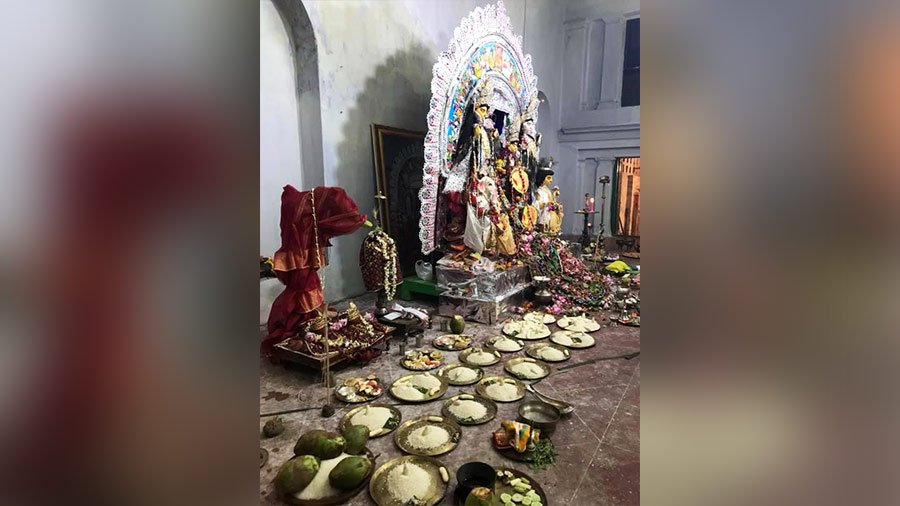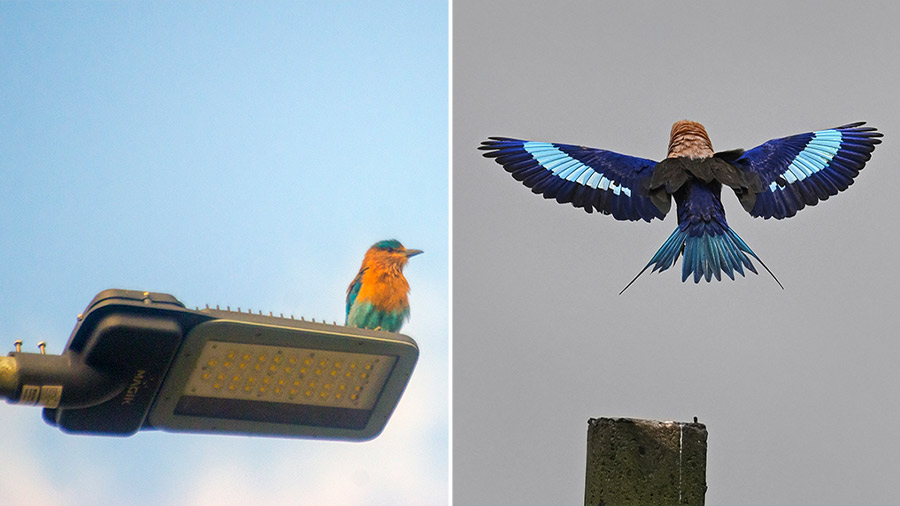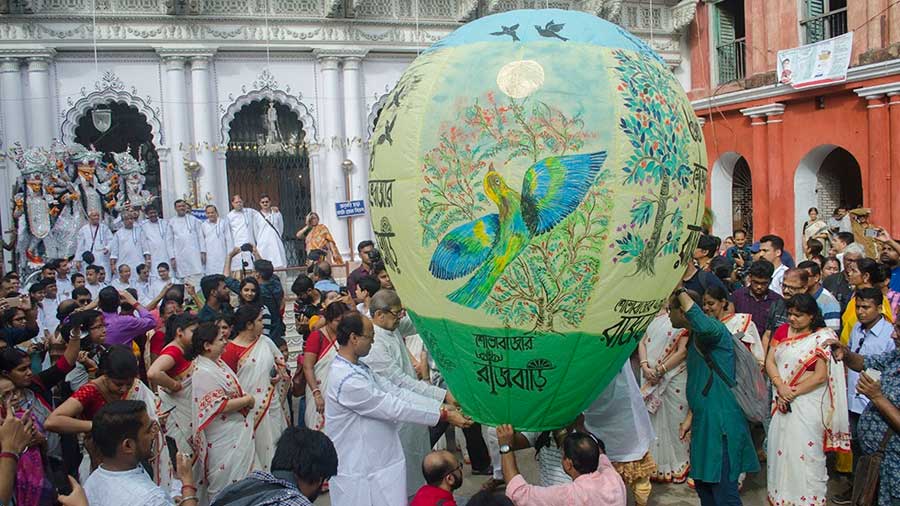When the goddess leaves Thanthania Chandra Bari every year on Dashami, she is carried on a bamboo palanquin and members of the family, except the daughters-in-law, follow Durga to the immersion ghat barefoot.
Another Dashami must at the 173-year-old puja, held now in an inconspicuous lane off Bidhan Sarani, is that the members of the family have dodhikorma (flattened rice, curd, milk and batasha all missed together) before joining the immersion procession. Every year, one of the daughters-in-law of the family offers konokanjali, wherein the husband puts chaal (rice), mishti and a silver coin into the wife’s aanchal (the loose end of the sari). The wife accepts the offering, facing the idol, and walks away without looking at the idol again.
On the family’s return from Jagannath Ghat, the family members are sprinkled with shantir jol and served siddhi mishti. For dinner, the family members must have shaaker ghonto, payesh and maachh (fish).
“Earlier, a neelkontho (Indian roller) bird would be released on Bijoya Dashami but now, we keep a bird made of clay and worship that. These 10 days, our friends and family come together to celebrate one of the most important times of the year,” said Irene Chandra, one of the daughters-in-law of the family.

The ‘dhuno purano’ ritual in progress at the Thanthania Chandra Bari
First started by Babu Srinath Chandra in 1850, the current address of the Thanthania Chandra Bari puja is 224 Bidhan Sarani. The family earlier lived at 3, Braja Dulal Street. As the Chandra family moved to a new home on Bidhan Sarani, another branch of the family simultaneously settled at 20 Bechu Chatterjee Street, which is now recognised as the Jhamapukur Chandra family.
The Puja celebrations at Thanthania Chandra Bari begin on Mahalaya and continue for the next 10 days. The idol one worshipped at Chandra Bari is that of Hara-Gauri, where Gauri (Durga) is found sitting on Hara’s (Shiva) lap. Irene points out that this was to promote peace and harmony in the family. “This idol is unique because it doesn’t portray Durga in her more aggressive form, rather the focus is on peace. We celebrate her like a daughter of the family who’s returned to her father’s place from her in-laws,” she said.
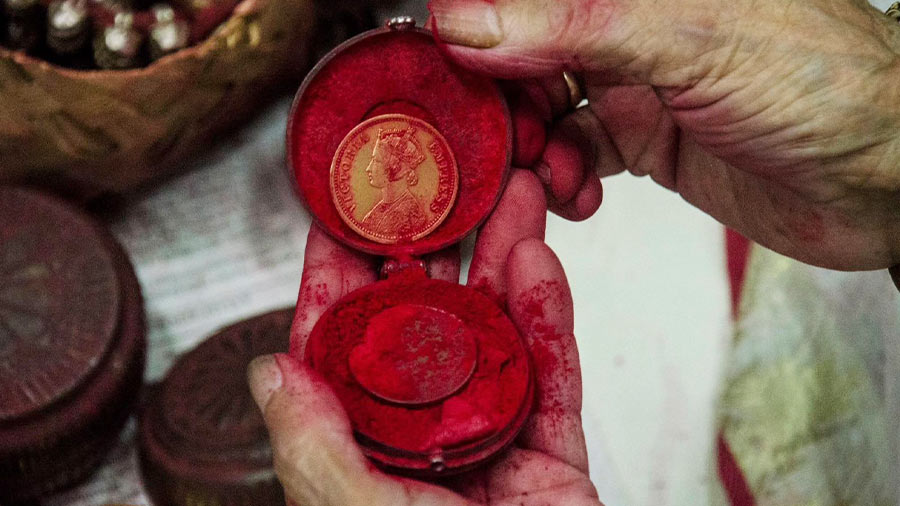
The gold mohur is kept inside the ‘sindoor dani’ and is placed on the goddess’ palm during the Puja
The goddess is adorned with gold and silver on Sashthi morning. Kola bou snan (bathing of kola bou) marks the beginning of Saptami followed by the setting up of the kola bou. The puja starts in full swing Saptami onwards.
The bhog offered to the goddess includes a special sweet called roshkora, which is made of coconut. Other than that, the bhog is a vegetarian one and needs to include luchi, served with sugar and alu bhaja. On Ashtami, the family members offer anjali and fast the entire day until that day’s sandhi puja.
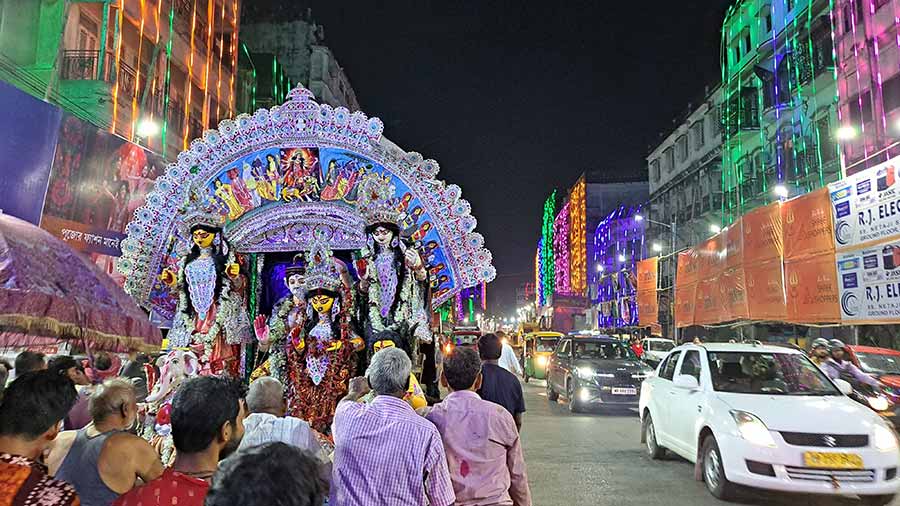
The goddess and her children on their way to Jagannath Ghat
“There is one specific gold mohur that is kept inside a sindoor dani (vermilion box). This mohur is placed on the goddess’s palm during sandhi puja and once the puja is over kept back in the sindoor dani. In fact, Durga does not carry any weapons, just the mohur. However, for a brief while during sandhi puja the goddess has to carry weapons. This is why a picture of the Doshobhuja (the 10-armed avatar of the goddess) always finds a place above Hara-Gauri on the chalchitra (hand-painted backdrop).

Immersion of the goddess at Jagannath Ghat
Ashtami also sees the dhuno purano ritual where the women of the family sit facing the idol with maalsha (clayware) containing dhuno (an Indian form of frankincense, is a plant resin of sal tree) on their hands and head. “Sometimes people who’ve had their wishes granted also perform the ritual,” said Irene.
The women of the household need to wear nath (traditional nose pins) at all times when the goddess is being worshipped. They are also responsible for the bhog cooked during these 10 days.
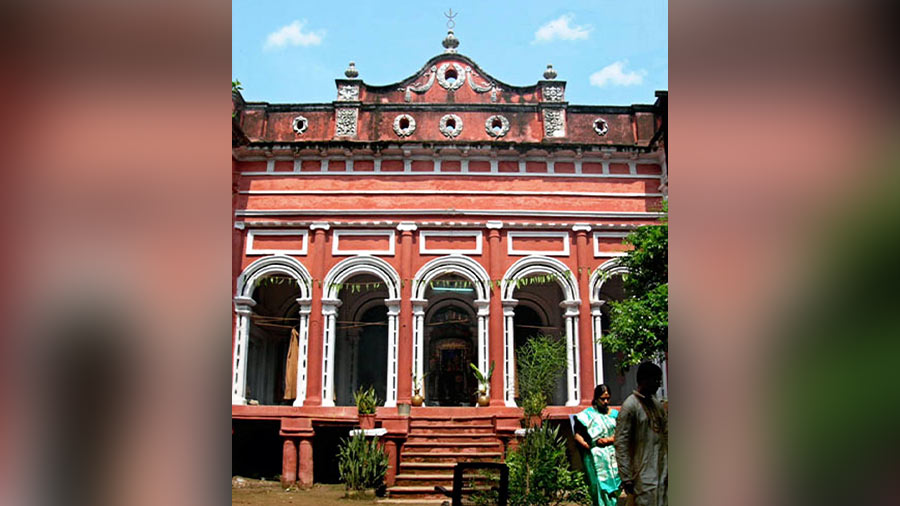
The Thanthania Chandra Bari at 224 Bidhan Sarani
